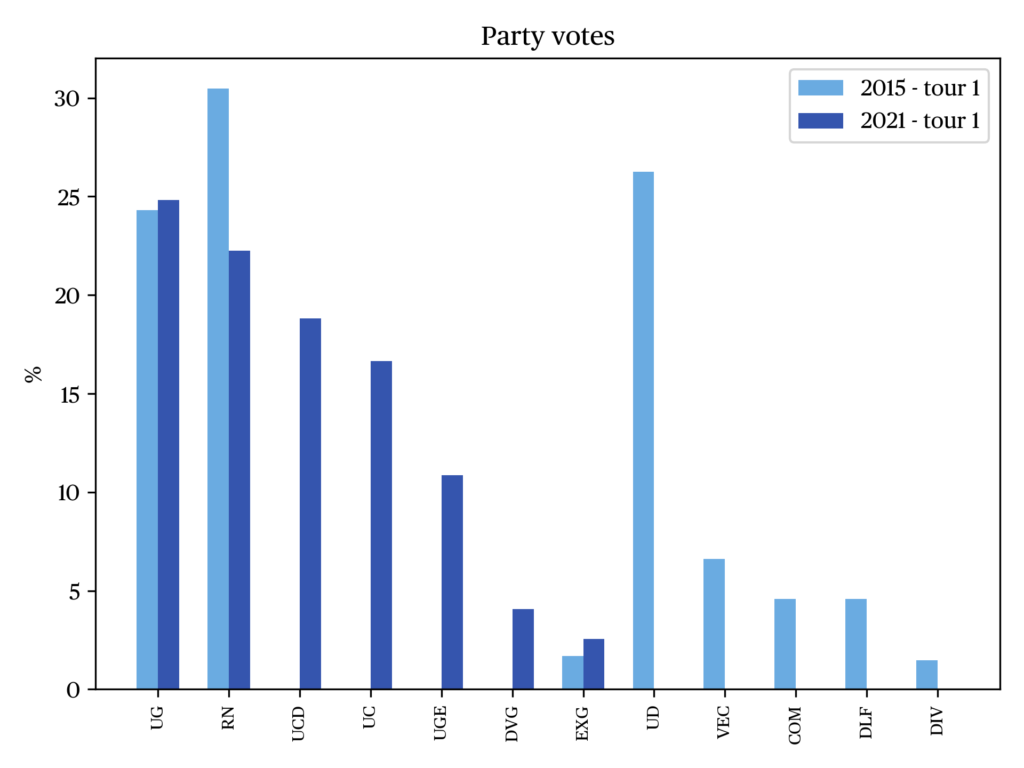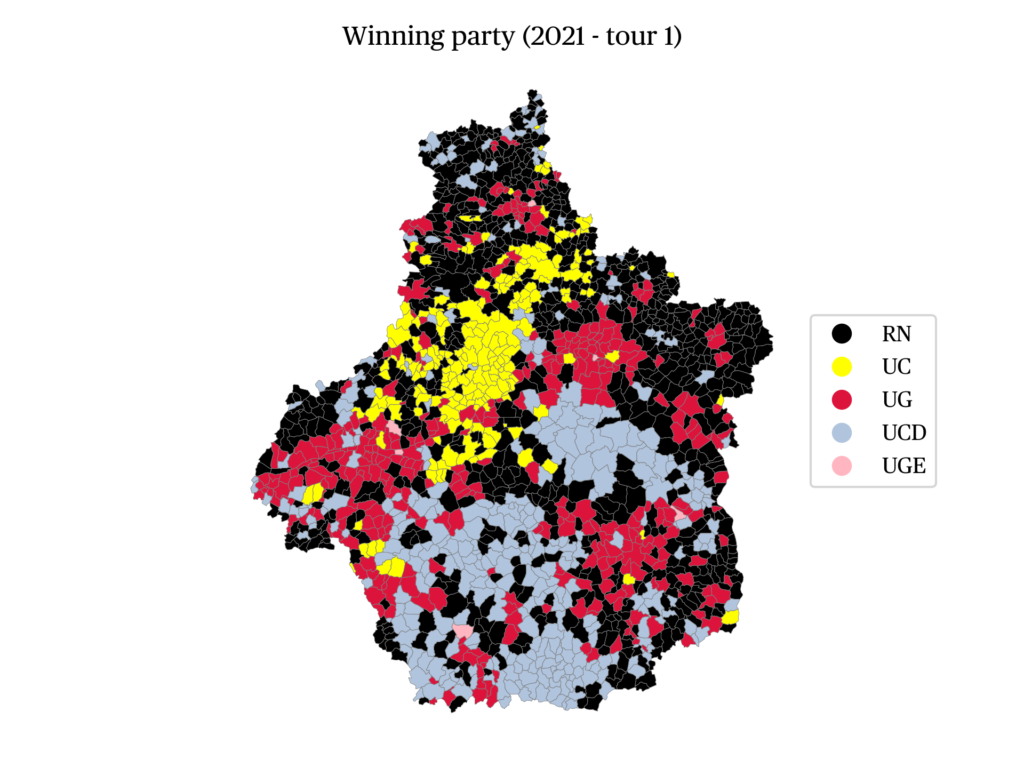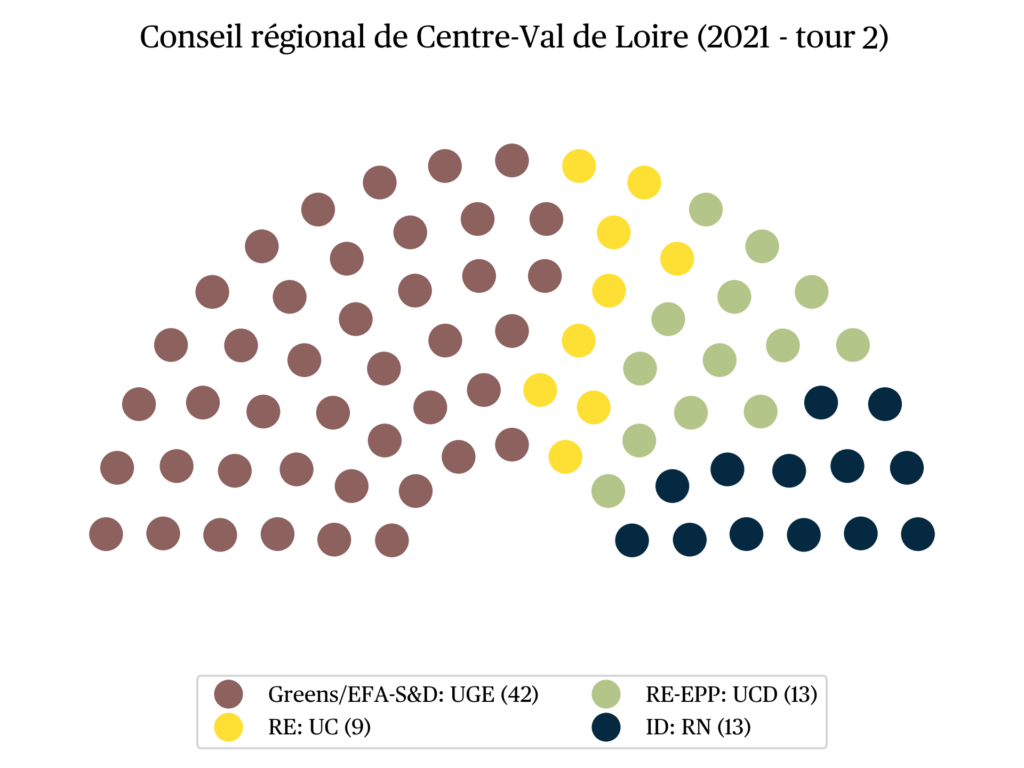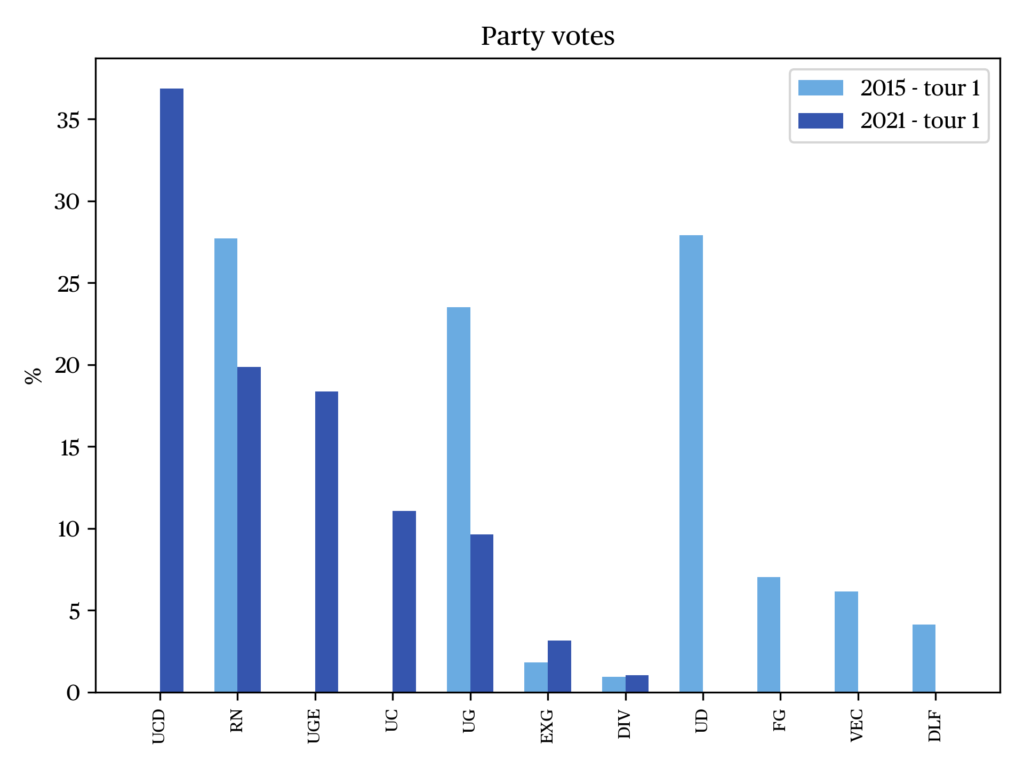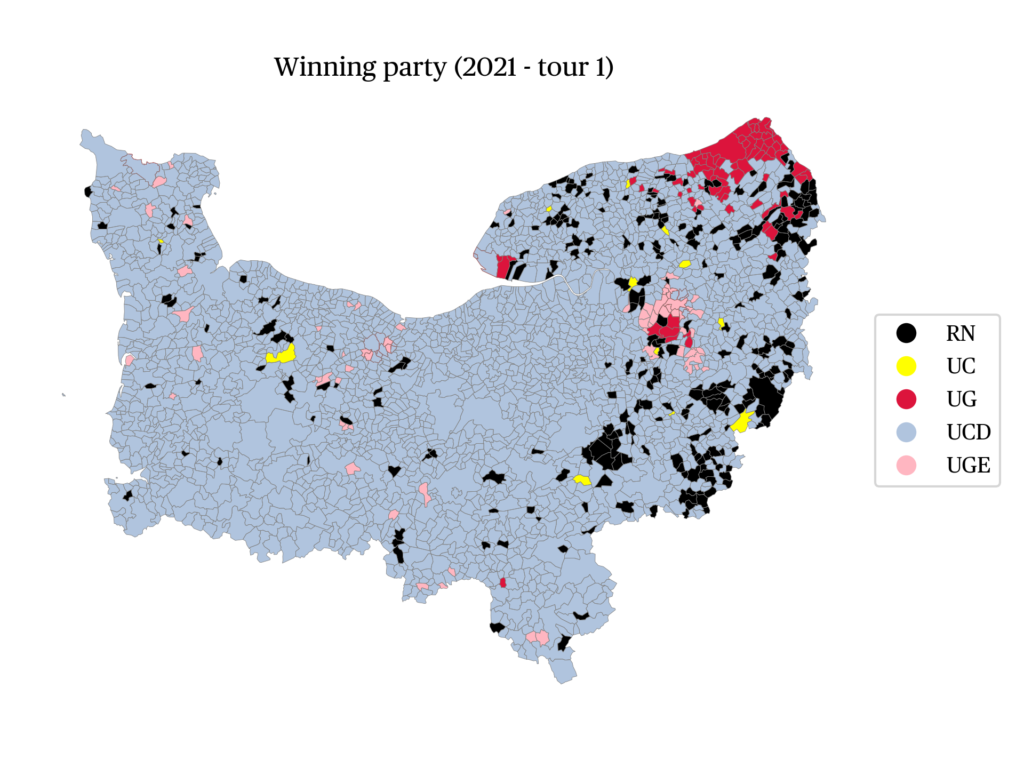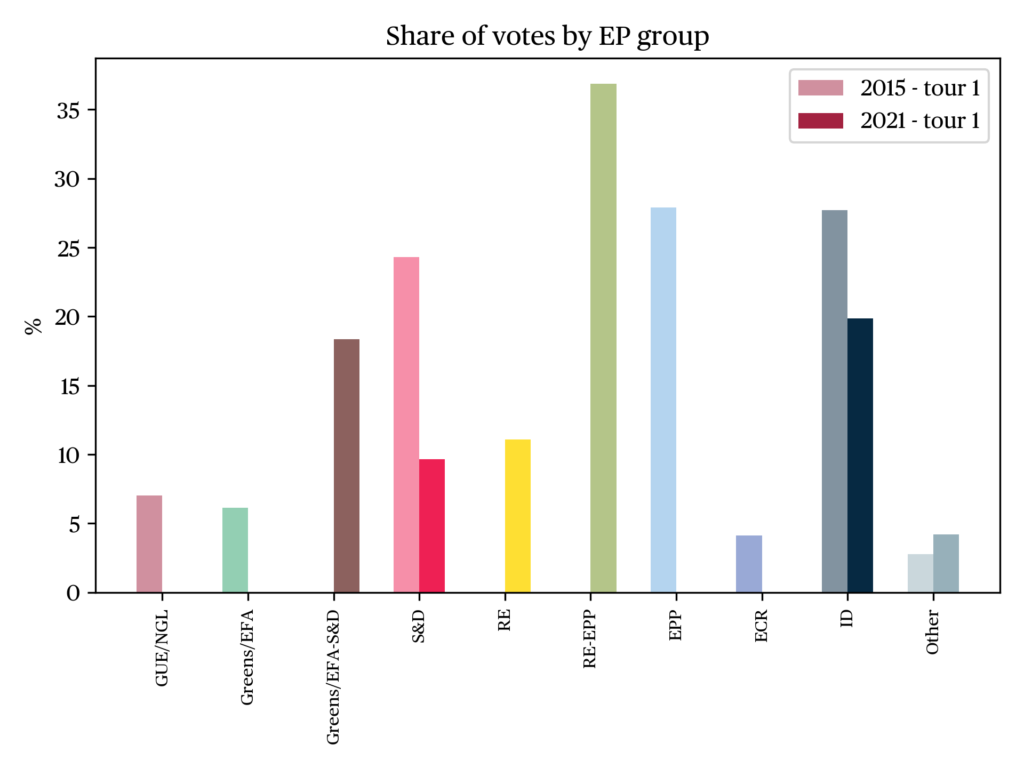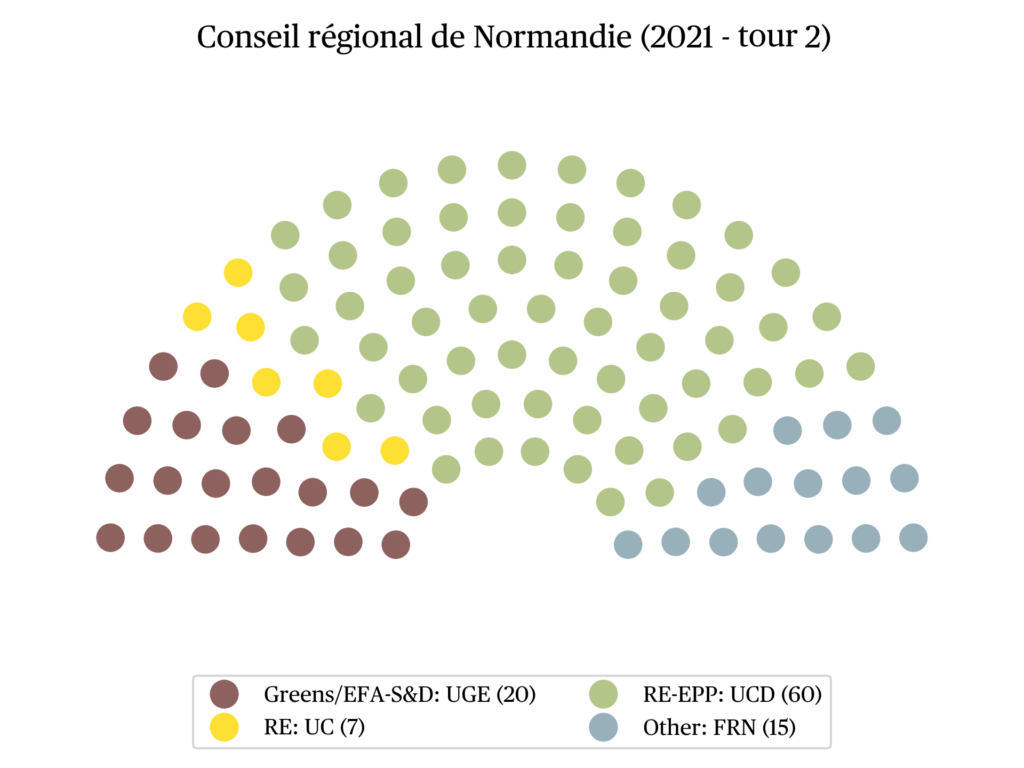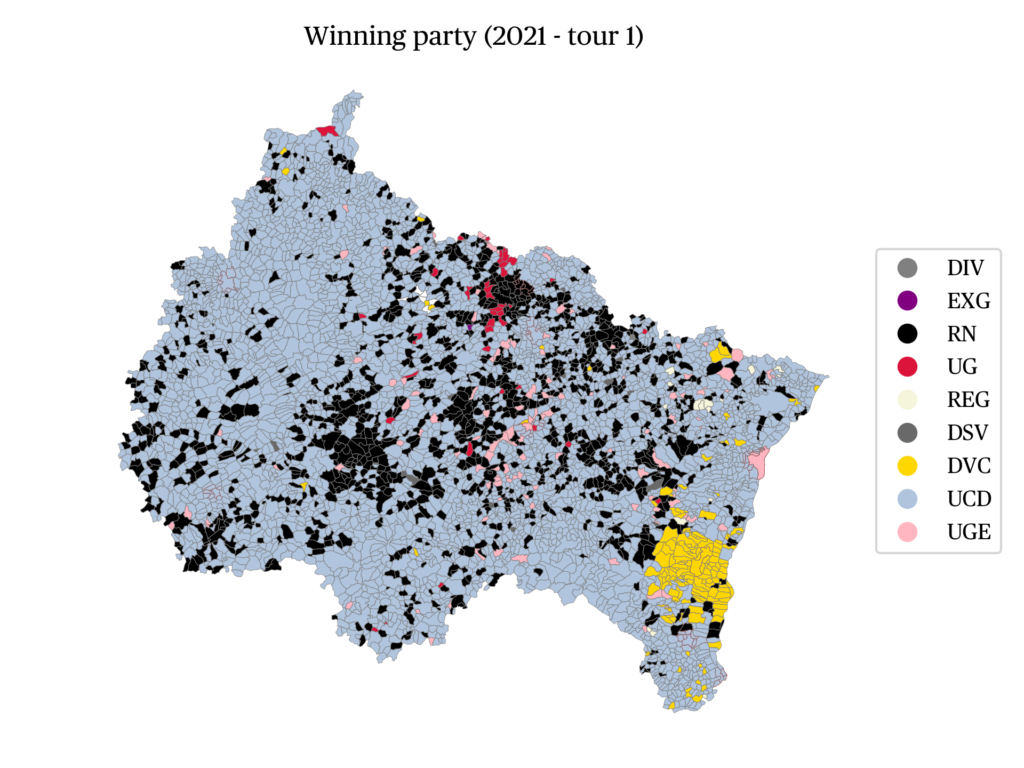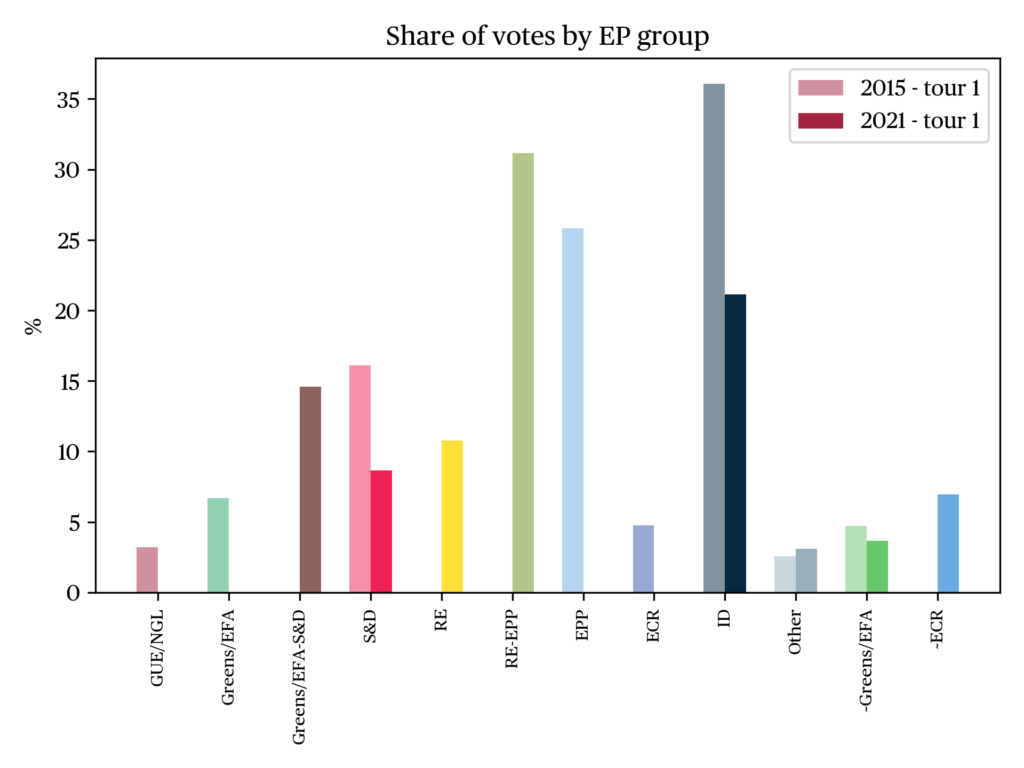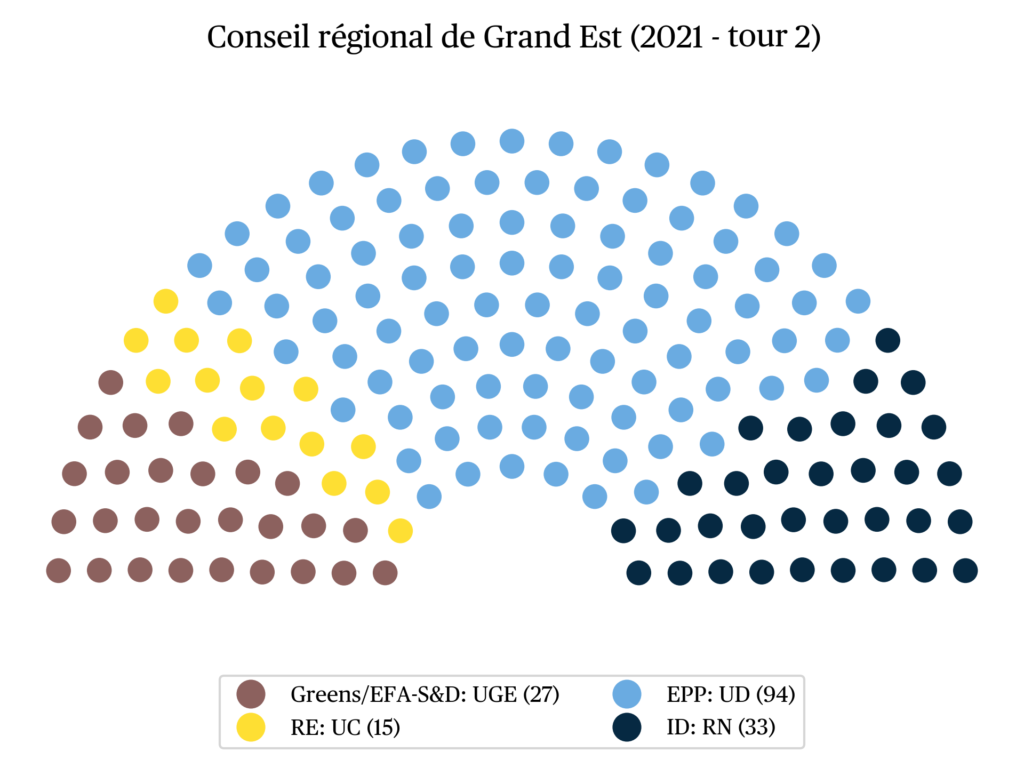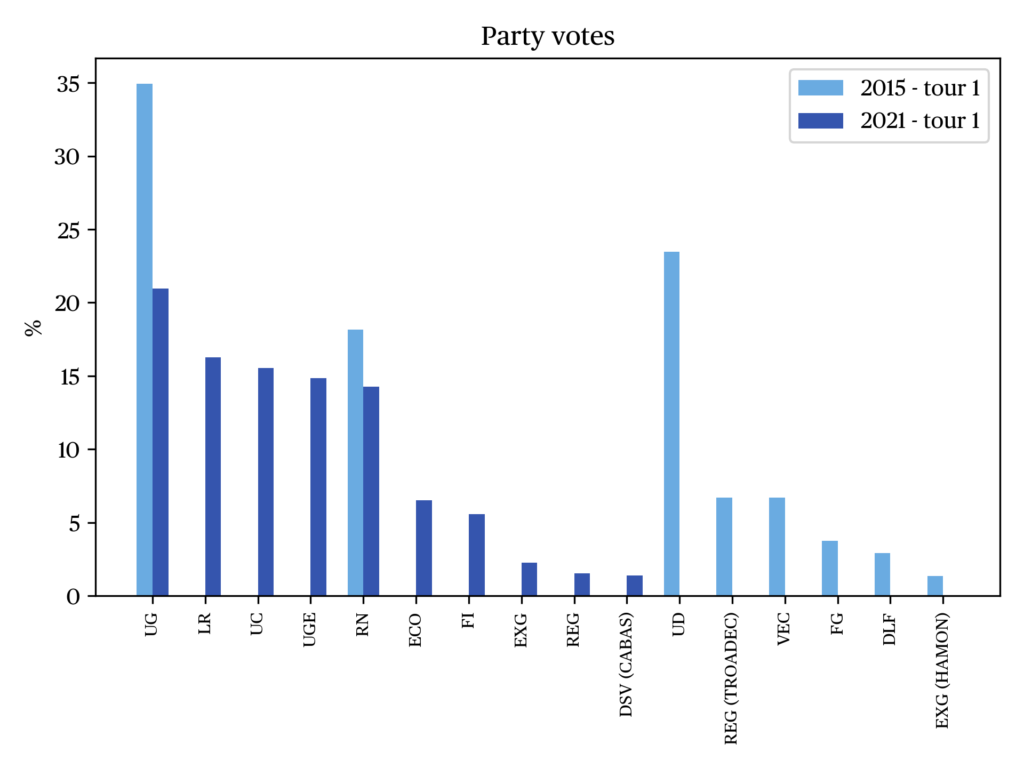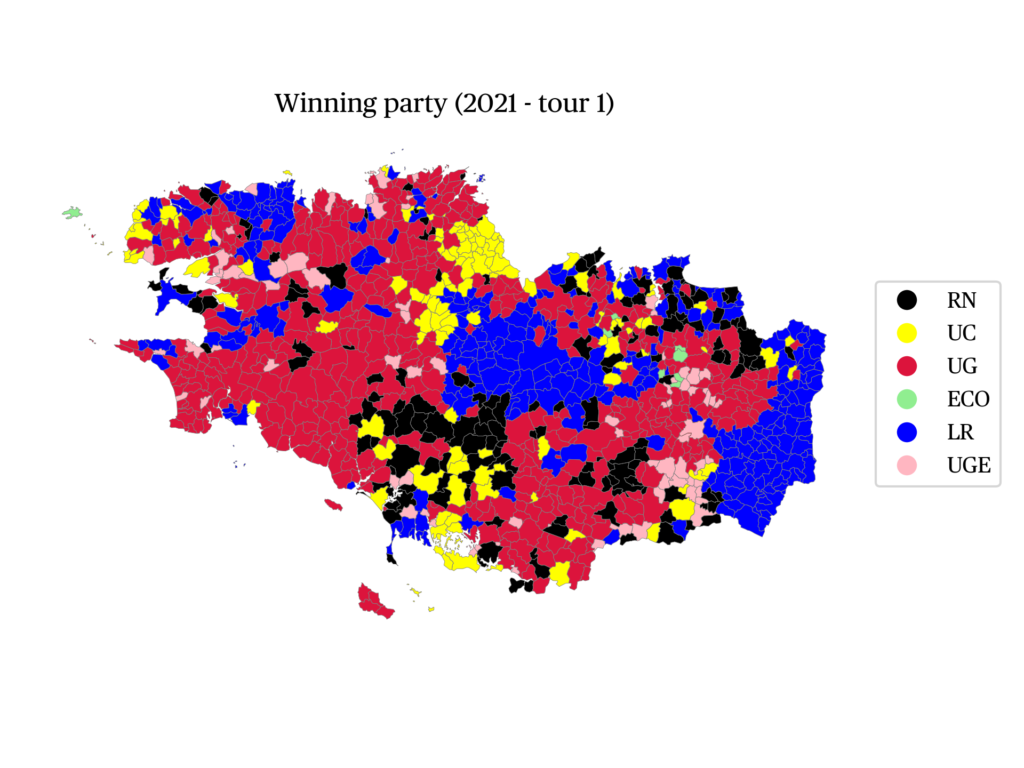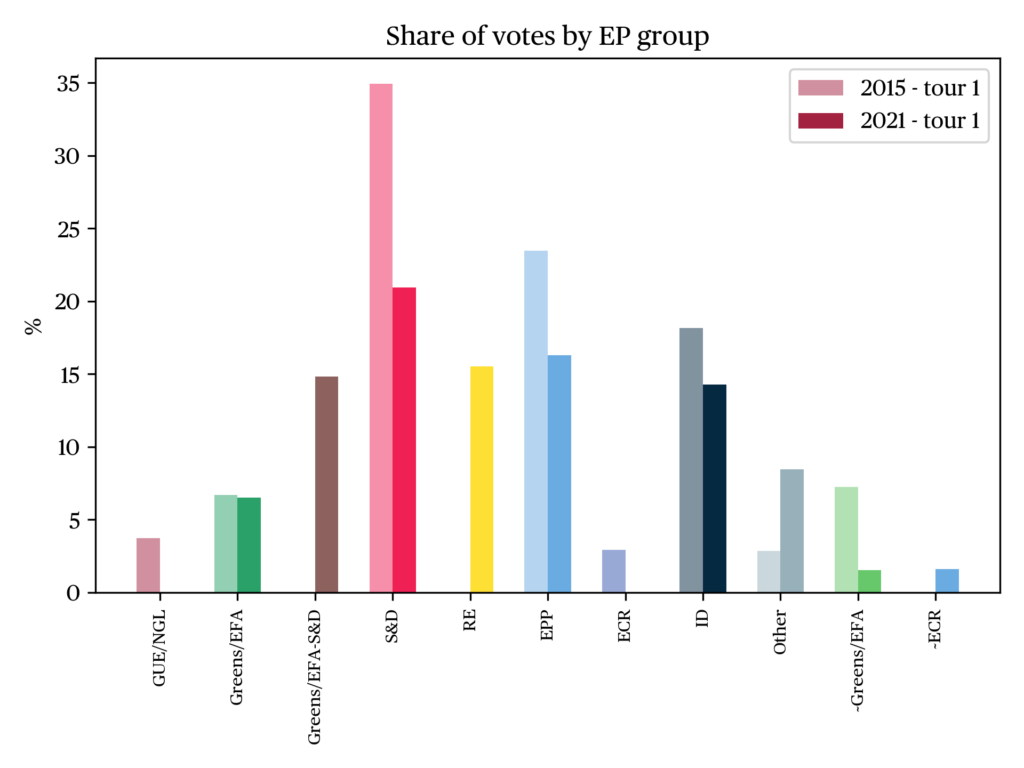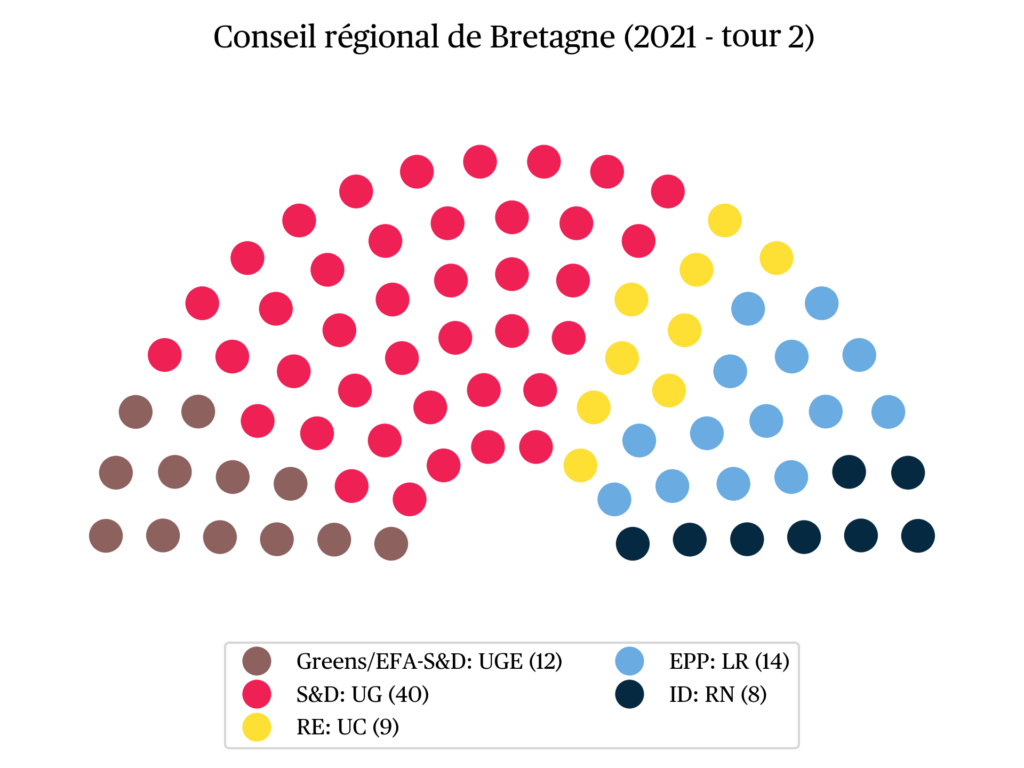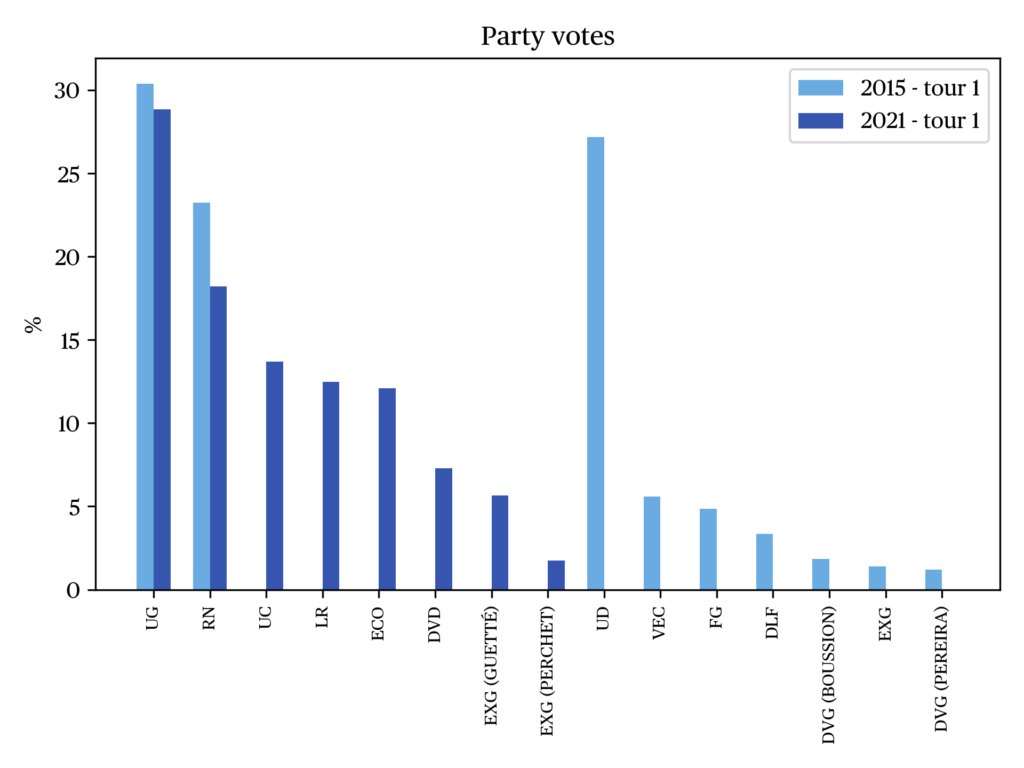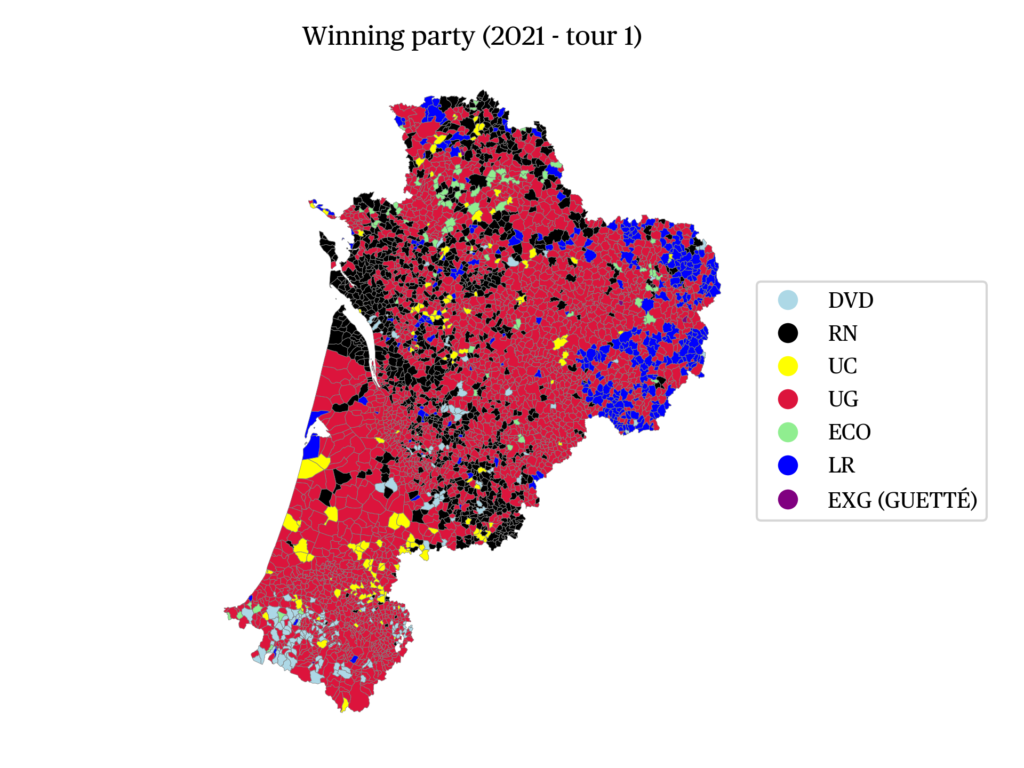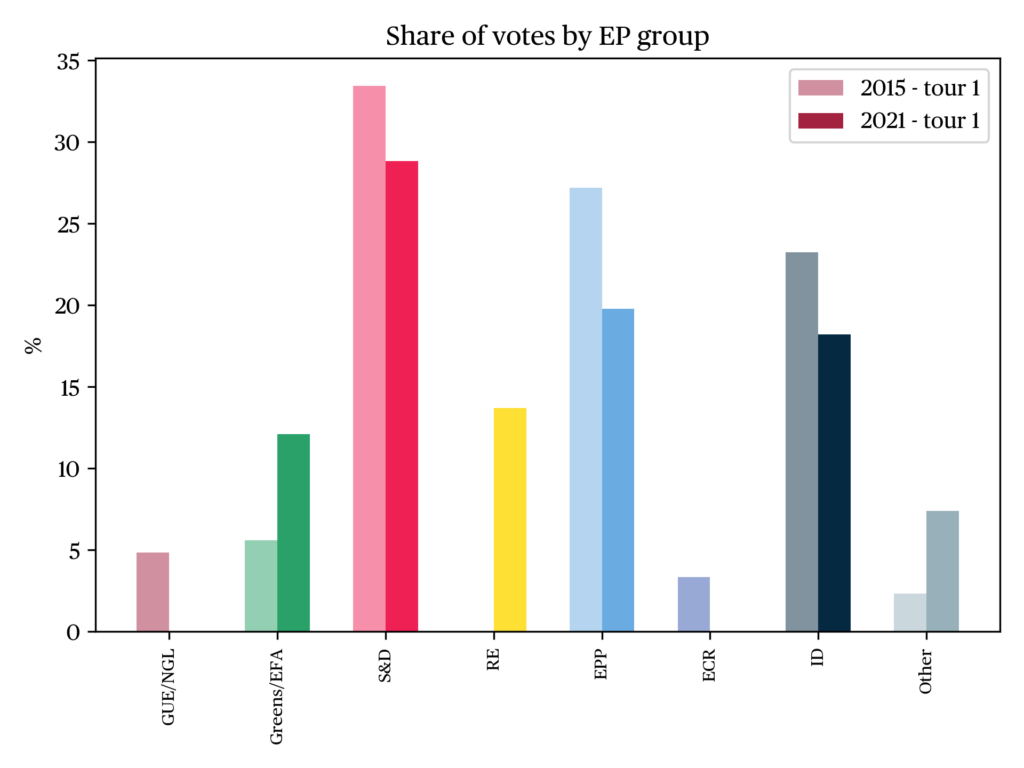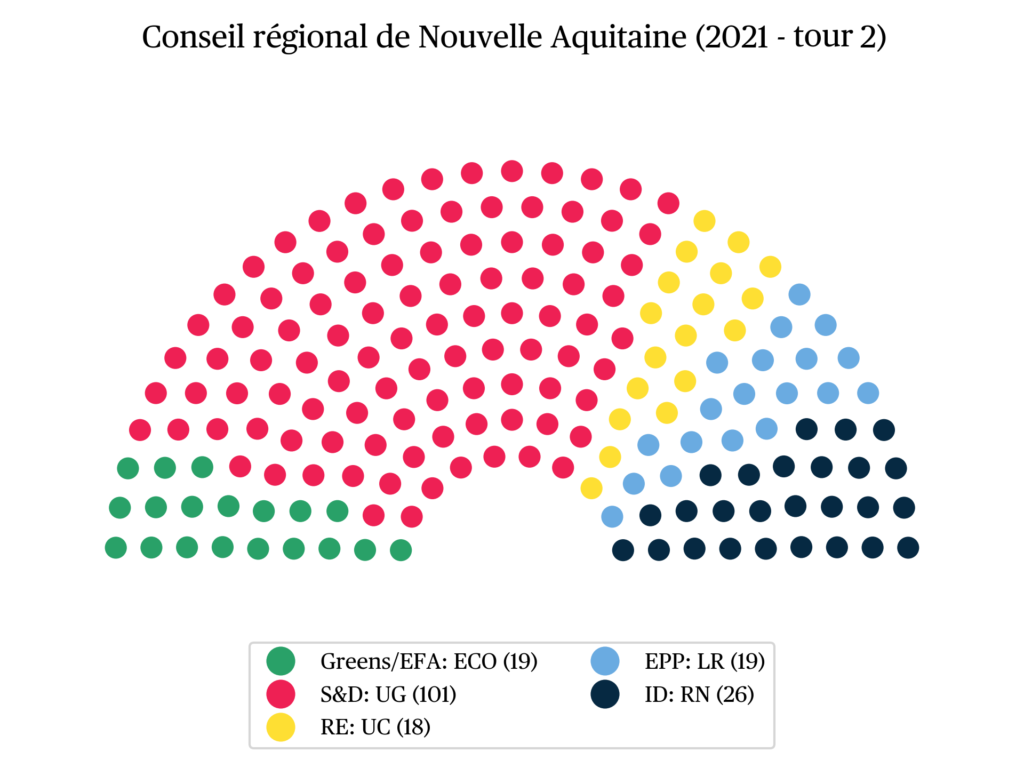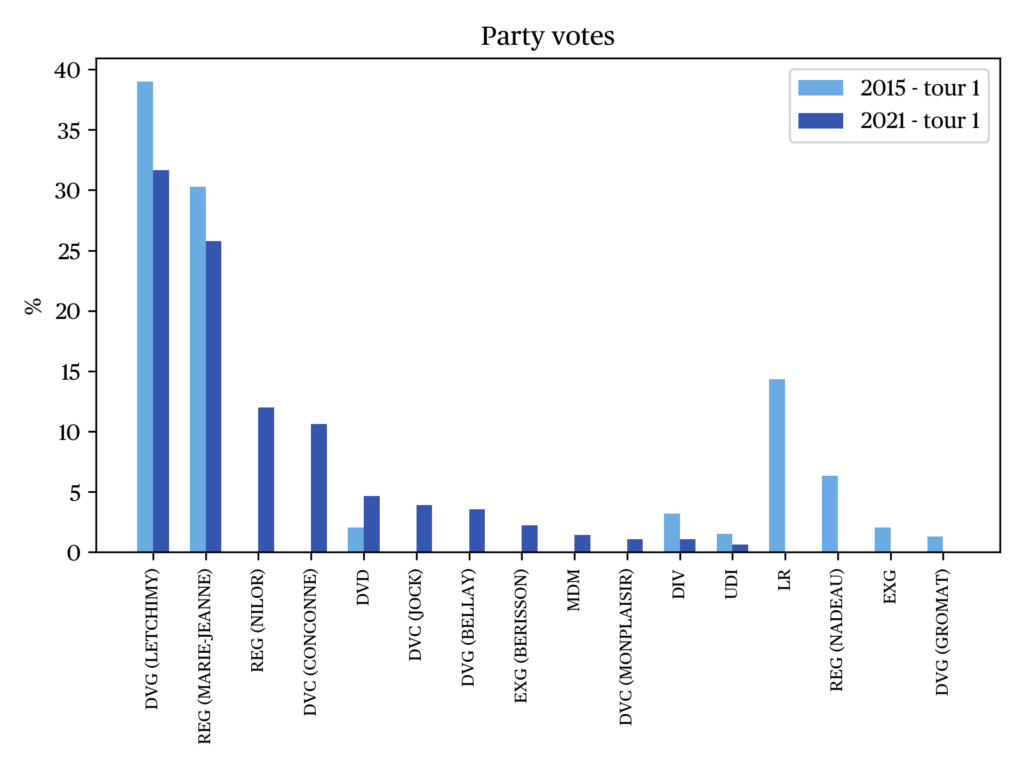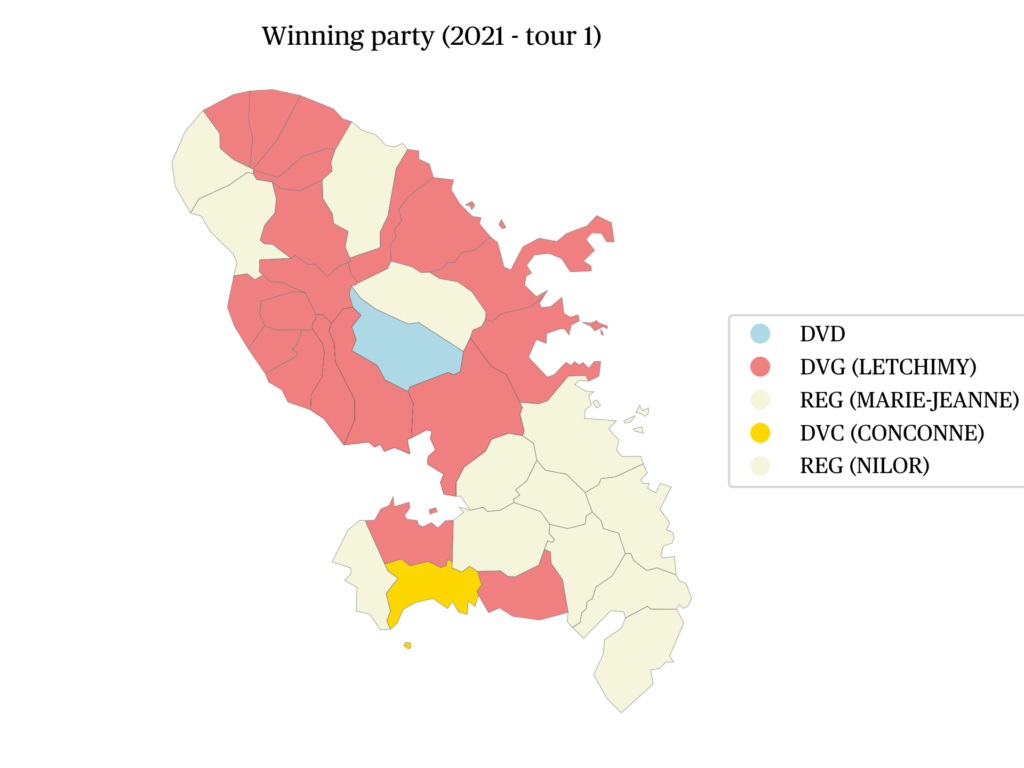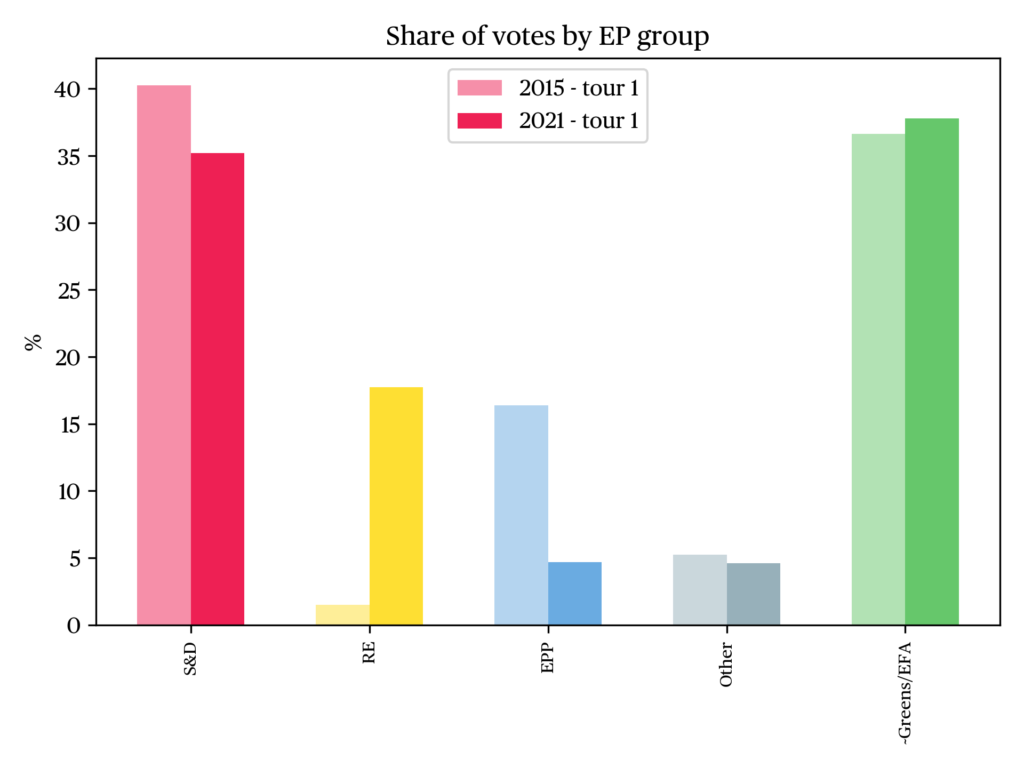French regional elections: short analyses
Issue
Issue #2Auteurs
Jean-Toussaint Battestini , Lucie Coatleven , François Hublet , Mattéo Lanoë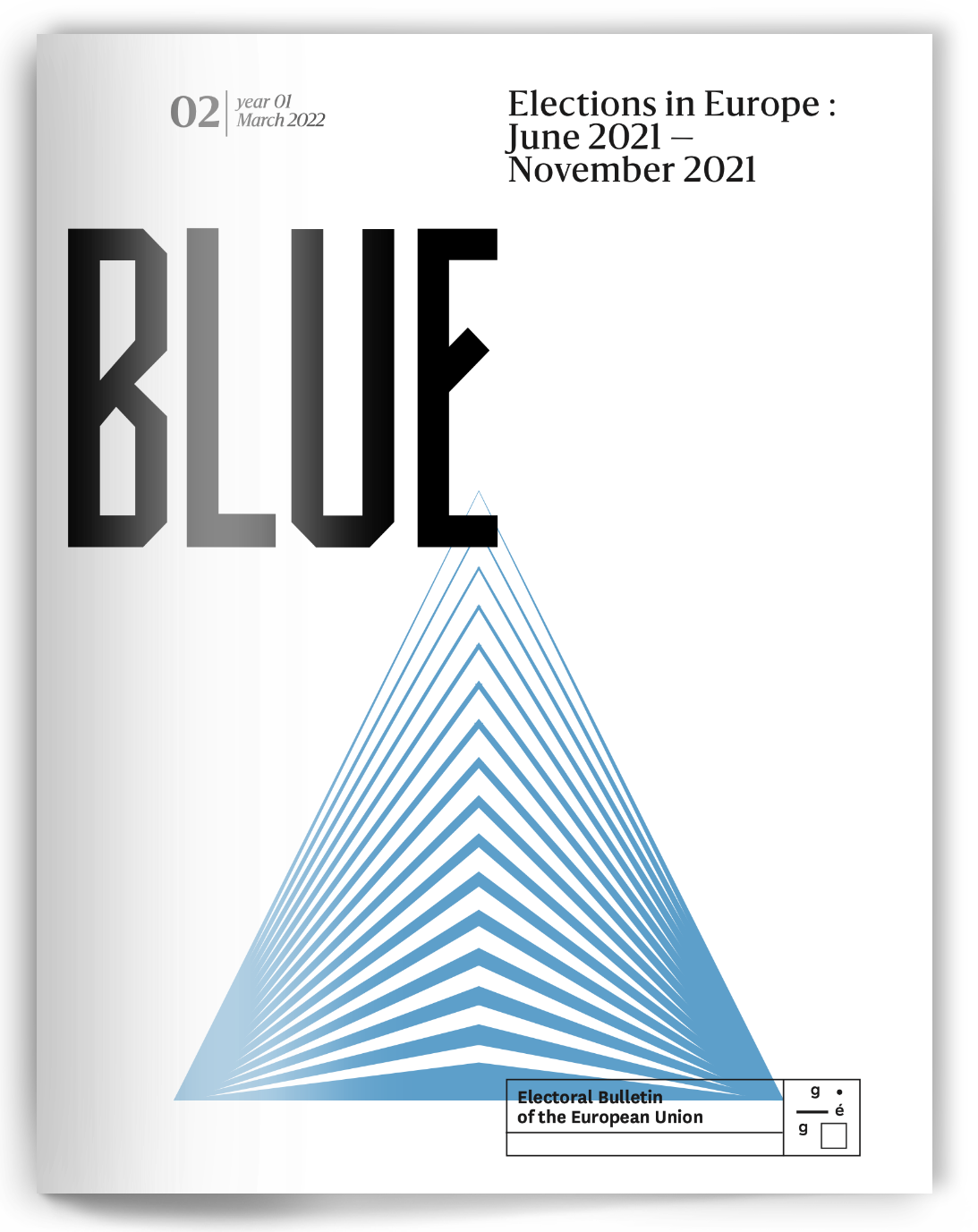
21x29,7cm - 167 pages Issue 2, March 2021 24,00€
Elections in Europe : June 2021 – November 2021
Centre-Val de Loire
In 2015, the election to the Regional Council of Centre-Val de Loire had seen the National Front (FN, ID) win the first round with 30.49% of the vote, far ahead of the joint list of the center and the right (26.25%) and the list led by the Socialist Party (PS, S&D; 24.31%). The second round, however, reshuffled the deck: with an increase in turnout of nearly ten points, the left-wing and Ecologist list led by François Bonneau (PS, S&D) finally overtook both the center-right list (34.58%) and the FN (30.00%), which lost 0.5 percentage points despite an absolute gain of more than 45,000 votes. Thanks to the 25% majority bonus granted to the leading list, François Bonneau’s list finally obtained a majority of the seats and the leadership of the regional executive.
In 2021, the growing weakness of the left, whose vote share was around 20% in pre-election polls, but also the prospect of a high abstention rate, had revived fears of a victory for the National Rally (RN, formerly FN). In the pre-election polls, the RN was given 28% in the second round and 30% in the second round. In addition, there was the prospect of four lists being maintained in the second round: in addition to those of the United left, the United right and center, and the RN, the joint MoDem/LREM list (RE) could hope for an easy qualification. This presence of four parties in the second round could have favoured the dispersion of centrist votes, and thus facilitated a victory for the extreme right.
However, the electoral results disproved these expectations. The United left list of outgoing president François Bonneau won in the first round with 24.81% (-0.5 pp), followed by those of the RN (22.24%, -7.8 pp), the right and center (18.82%, -7.4 pp), the MoDem/LREM (16.65%, nv.) and Europe Écologie les Verts (EÉLV, Greens/ALE; 10.85%, +4.3 pp). A second Ecologist list (4.07%, nv.) and that of the Trotzkists of Lutte Ouvrière (LO, 2.56%, +0.9 pp) did not exceed the threshold necessary to remain in the second round. The very low turnout (32.74%, -16.8 pp) seems, as in most French regions, to have benefited the outgoing presidents. As in 2015, the lists of the left and the Ecologists merged between the two rounds of voting. Unlike in 2015, however, the United left and Ecologists won the second round with a very large lead, gathering 39.15% of the votes and 42 seats out of 77, compared to 22.61% and 13 seats for the right-wing and center list, 22.24% and 13 seats for the RN list and 16.00% and 9 seats for the MoDem/LREM list. François Bonnaud won the election and was re-elected as President of the Regional Council.
Normandy
Normans were called upon to vote on June 20 and 27, 2021, as in all other French regions, to renew the 102 seats of the Regional Council. After his victory over incumbent Nicolas Mayer-Rossignol (PS, S&D) by a narrow margin of only 5,000 votes in December 2015, Hervé Morin, the then leader of the UDI (RE) list, was campaining for re-election as president of the Normandy Region. Seven lists were on the ballot in the first round: the list of the outgoing center-right majority led by Hervé Morin (The Centrists, EPP), a National Rally list (RN, ID) led by Nicolas Bay, a Terre de progrès/LREM list (presidential majority, RE) led by Laurent Bonnaterre, a dissident LREM list led by Stéphanie Kerbarh, a PS/EELV list led by Mélanie Boulanger, a PCF/LFI list (GUE/NGL) and a far-left list supported by Lutte Ouvrière.
In the first round, the party The Centrists, which resulted from a split from Hervé Morin’s UDI, won with 36.85% of the vote, ahead of the National Rally and the Socialist candidate Mélanie Boulanger (S&D), who obtained 18.37% of the vote. The second round went smoothly for the outgoing president, who won with 44.26% of the vote against 26.18% for the Socialist candidate. The Rassemblement National finished third with 19.52% of the vote and lost 3,000 voters between the two rounds. With the exception of the list of the PCF and LFI, all parties previously represented in the Regional Council obtained seats in the new legislature. Turnout in the first round was 32.99%, down 17 percentage points from 2015, and the second round mobilized fewer voters than the first with only 32.91% participation, down 26.2 percentage points.
There are three main facts to take away from this election. The first fact is that Normandy was no exception the massive drop in turnout observed in all French regions. Lists of all parties lost voters between 2015 and 2021. Neither the outgoing majority, nor the socialists, nor the far right succeeded in strengthening their positions on the evening of the first round. The second fact is the loss of 3,000 votes for the far-right candidate Nicolas Bay between the two rounds, which may indicate a certain demobilization of his electorate, as in other regions. The third and last fact to remember is the confirmation of the lack of local presence of the Emmanuel Macron’s party. With only 10.04% of the vote in the second round and a loss of nearly 10,000 voters between the first and second rounds, Terre de progrès candidate Laurent Bonnaterre was unable to impose himself in this campaign, winning only 7 seats.
Grand Est
Voters in the Grand Est, a region of about 5.5 million inhabitants and 10 departments, were called upon to vote on June 20 and 27. In 2015, following a three-way run-off against National Front (FN, ID) candidate Florian Philippot (36.08%) and Scialist (S&D) candidate Jean-Pierre Masseret (15.51%), the list of Philippe Richert (LR, EPP) won the election with 48.4% of the vote; the polls for the 2021 election placed the list of Jean Rottner (LR), president of the region since the resignation of Phillipe Richert in 2017, slightly behind the far right, which considered the region to be “winnable.”
In the first round, on June 20, 2017, the “Stronger Together” list led by Rottner came out on top with 31.15% of the vote, followed by the list of National Rally (RN, ID) candidate Laurent Jacobelli, which received 21.12% of the vote. The République en Marche (LREM, RE) list led by Brigitte Klinkert, Deputy Minister for Integration attached to the Minister of Labour, Employment and Integration, obtained 12.17% of the votes and came in fourth place, behind the United left list — bringing together EELV (Greens/EFA), the PS and the PCF (GUE/NGL) — which obtained 14.60%. The “New Call for Grand Est” list led by Aurélie Filippetti, member of Génération-s (S&D), obtained 8.64% of the vote, a little less than two points more than that of Florian Philippot, the RN’s former vice-president, who finished in sixth place with 6.95%.
In the second round, this trend was confirmed. While the order of the four leading lists was unchanged, Jean Rottner obtained 40.3% of the votes, or 94 seats out of 169, against 26.3% for the National Rally list, which obtained 33 seats. The lists “For ecology and social justice” (EELV, PS, PCF) and “The strength of our territories” (LREM) won 27 and 15 seats respectively.
In the context of the health crisis, the winning “Stronger Together” list had focused its campaign on three pillars: the youth, the hospital system and security. In their program, they called for a reinforcement of the municipal police, deployment of video surveillance in those municipalities that wished to do so, as well as investments in the region’s hospitals (55 million euros), including the training of 2,000 additional nurses, 2,000 orderlies and 2,000 life assistants each year.
It is also important to note that the region has the highest abstention rate in France. Up sharply from the 2015 elections, abstention rises from 48.91% in 2015 to 69.75% in 2021 in the second round.
Brittany
Bretons were called upon to vote on June 20 and 27, 2021 to elect their new Regional Council. After being led by the current Minister of Defense Jean-Yves Le Drian, the region had to elect a new president. Unlike some other regions where the far right was on the rise, the regional election in Brittany was structured by a traditional left-right cleavage, with Loïg Chesnais-Girard (PS, S&D) and Isabelle Le Callenec (LR, EPP) leading two major lists. While in other French regions the far right was in second or even third place, the National Rally list led by Gilles Pennelle was only in fifth place (14.2% of the votes in the first round; 13.2% of the votes in the second round).
As in other regions, however, there has been a general collapse of absolute party votes; parties, even when they were in the lead, are losing seats and votes. On the left side of the spectrum, despite their victory, the Socialists lost thirteen seats; on the right side, the fall was less brutal, and the Republicans lost a single seat. The collapse of the vote is largely due to the historically low turnout, with absentions rates reaching 64% in the first round in Brittany. The advent of a list of the center led by Thierry Burlot (LREM-UDI) has also taken precious votes from the Republicans in the first and second rounds.
The estimates given by the polling institutes between June 3 and 7 were largely contradicted on the day of the election. In particular, Ipsos had predicted Gilles Pennelle (RN) to be the winner with 20% of the vote in the first round, while Odoxa had foreseen Thierry Burlot (LREM-UDI) with 18%. The lists of the Socialist Party and the Republicans were underestimated by both institutes. Estimates for the second round were equally problematic: the RN and the LREM-UDI list would be given as winners with up to 13 points more than their actual score, and the defeated PS would be overestimated by almost 10 points.
The announced confrontation with the far right did not happen. Breton voters brought the list of Loïg Chesnais-Girard (PS) in first place with 21.0% of the vote (-14 pp), then the list of Isabelle Le Callenec (LR) in second place with 16.3% (-7.2 pp), followed by those of Claire Desmares-Poirrier (EELV, Greens/EFA) with 14.8% (+1.4 pp), Thierry Burlot with 15.5% (Nv. ) and Gilles Pennelle (RN) with 14.3% (-3.9 pp). The lists of Daniel Cueff (ECO) and Pierre-Yves Cadalen (LFI, GUE/NGL) did not obtain the score necessary to qualify. As in 2015, the Socialist Party won — albeit less triumphantly — in the region with 29.84% of the vote (-22.09 pp) while losing 13 seats in the regional parliament. It is followed by the Republicans who lose 4 seats, EELV which gains 12, the LREM-UDI list which takes 9, and the RN which loses 4. Loïg Chesnais-Girard won the election and was elected President of the Regional Council.
Nouvelle-Aquitaine
While in 2015 New Aquitaine experienced a traditional left-right contest between Alain Rousset (PS, S&D) and Virginie Calmels (LR, EPP), this time the second-placed list in the June 2021 elections was Edwige Diaz’s (RN, ID) far-right list. The score of the LR list collapsed between, plunging from a relatively high score in 2015 (27.19% of the votes in the first round, 34.6% in the second) to the third place in 2021 (12.48% in the first round, 14.19% in the second), with only a small lead over the fourth-placed Ecologists. The Republicans lose 377,000 votes in the first round and 583,280 in the second round compared to 2015.
This electoral collapse, which hit the right especially strongly (with a loss of 48 seats), can be explained by several factors. The first is the competition from a centrist list led by Geneviève Darrieussecq (MoDem-LREM-Agir-TdP-UDI-MR). The centrists, which still ran together with the Republicans in 2015, gathered about 13% of the vote in each round on their own platform, depriving the right of valuable support. In practice, however, not only right-wing parties were affected by plummetting electoral support, which was caused partly by the historically low turnout that plagued the election (64.09% in Nouvelle-Aquitaine), as well as by the dispersion of votes among the five lists that advanced to the second round.
The neck-and-neck race announced by polling institutes between the list led by Alain Rousset (PS-PCF) and Edwige Diaz (RN) did not materialize. Polls conducted between May 1 and June 7 would always predict a difference of 1 to 2 percentage points between the two lists; the outcome of the vote therefore appeared uncertain, even if, for the second round, most institutes predicted that Alain Rousset would win.
The actual outcome of the vote was quite different. The score of the far right was largely overestimated by pollsters, who gave them 5 to 7 pp more than their actual score in the first round (18.20%). The same was true in the second round, with estimates of around 25 to 28% versus an actual vote share of 19.11%. This overestimation is part of a widespread belief in a “shift to the right” of French public opinion. Alain Rousset (PS-PCF) came out on top in the first round with 28.83% (-1.56 pp), followed by the RN list (18.20%, -5.03 pp), the center (13.71%, Nv), the right (12.48%, -14.71 pp) and the Ecologists, whose scores went up sharply (12.09%, +6.49 pp). The lists led by Eddie Puyjalon (LMR-RES-MDC-UPF-RPF), Clémence Guetté (LFI-NPA-PCF), and Guillaume Perchet (LO) did not obtain the score needed to advance to the second round. As in 2015, the list led by Alain Rousset won by a wide margin in the second round with 39.51% of the vote (-4.76 pp) and won 101 seats in the new legislature. He is followed by the National Rally and the Republicans who lose respectively 3 and 28 seats, the ecologists who gain 1, and the center which gains 18. Alain Rousset won the election and was re-elected as head of the Regional Council.
Martinique
The Assembly of Martinique is the unicameral parliament of the Collectivity of Martinique. Based on a similar institutional set-up as in Corsica, the Assembly elects an Executive Council (regional government) composed of nine members. Its president — who is not the president of the Assembly — is the most important figure in the regional executive.
Martinique present a unique political configuration among French overseas territories, which saw the same two list leaders competing against each other in every regional election since 2010. Serge Letchimy, leading the list of the Parti progressiste martiniquais (PPM, autonomist left) and its allies, was running for the third time against incumbent Alfred Marie-Jeanne, the President and founder of the Mouvement indépendantiste martiniquais (MIM, nationalist left). The latter, born in 1936, has led the list of the MIM and its allies without interruption since 1983. Marie-Jeanne had been elected president of the Regional Council and then of the Executive Council three times (1998, 2004, 2015). His terms were interrupted by six years (2010-2015) during which Letchimy had led the Regional Council. The 2015 election saw the MIM and its left-wing and far-left pro-independence allies (RDM, Palima, communists) form a strategic alliance between the two elections with the center-right (Les Républicains, MoDem, FMP) to successfully defeat the PPM and its socialist and autonomist allies.
The outcome of the 2021 election paved the way for Serge Lechtimy’s return to executive power. The PPM list won the first round with 31.66%, against 25.80% for the MIM, 10.63% for the list of the dissident Catherine Conconne and 12.01% for the list led by Jean-Philippe Nilor (Péyi-A, pro-independence left-wing), which included members of the former majority. The Republicans (LR, EPP) and the MoDem (RE), who where both members of the previous government coalition, obtained only 4.68% and 1.09% of the votes respectively, while seven other lists shared the rest of the votes. Turnout was low, at 32.45 per cent (-8.7 pp). In the second round, the PPM list won with 37.72%, narrowly beating the MIM list, which, with 35.27%, recorded a gain of nearly 13 points, corresponding to a near doubling of their absolute number of votes obtained. The Conconne and Nilor lists obtained 14.47% and 12.54% of the votes respectively. The participation is clearly on the rise, reaching 44.83%.
While the remobilization of the electorate between the two rounds and the transfer of votes seemed to have benefited the outgoing president, Martinique — like Réunion and French Guiana, but unlike other French regions — experienced a change of majority, in a period marked by very strong social tensions in the French overseas territories. Letchimy was elected to the presidency of the Executive Council, while Lucien Saliber, who is deemed close to the PPM, took over the Assembly’s presidency.
citer l'article
Jean-Toussaint Battestini, Lucie Coatleven, François Hublet, Mattéo Lanoë, French regional elections: short analyses, Mar 2022, 87-95.
à lire dans cette issue
voir toute la revue






